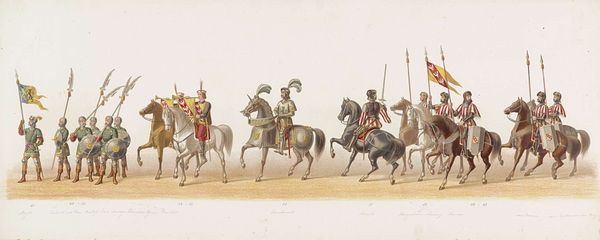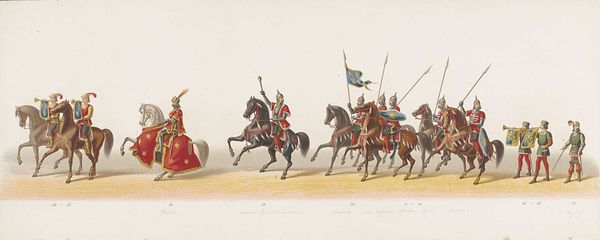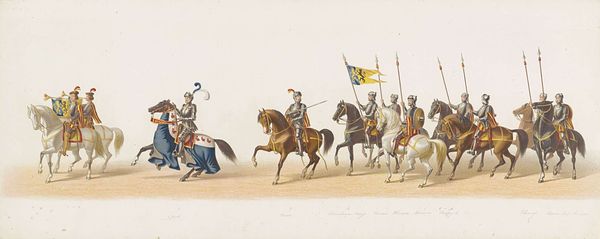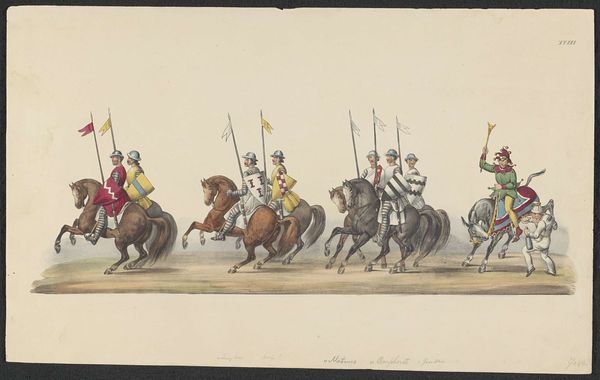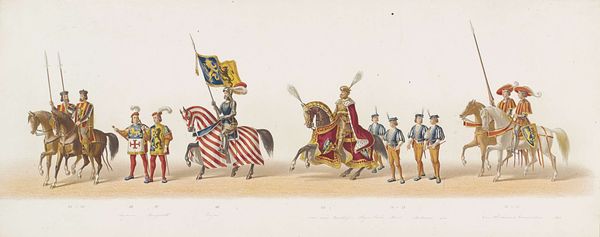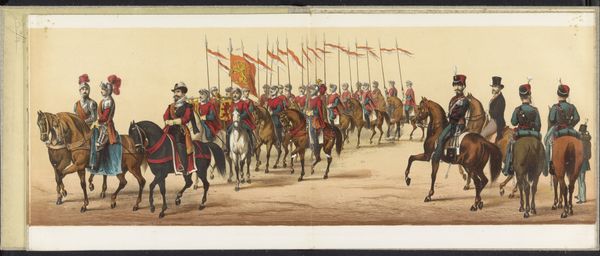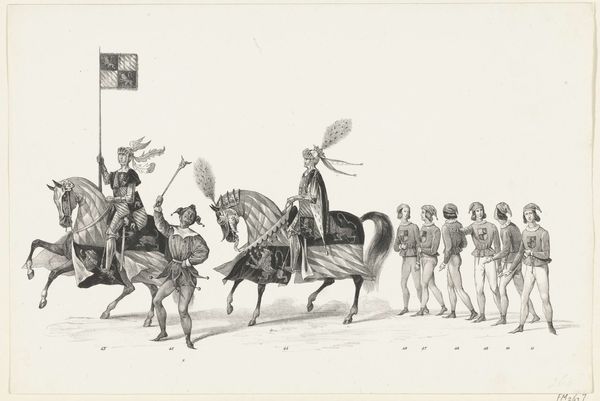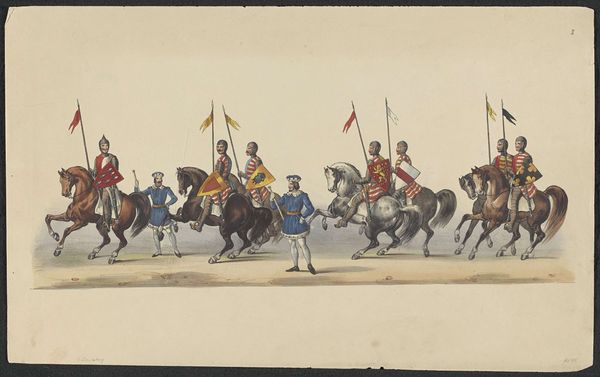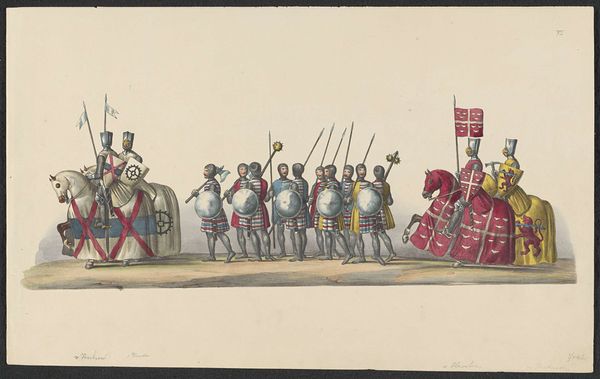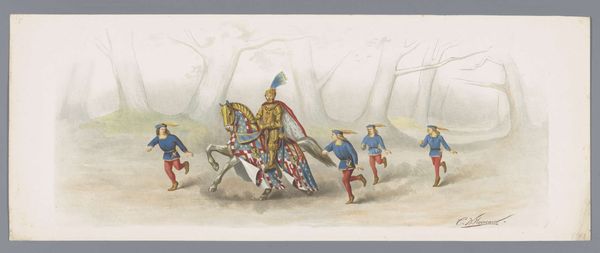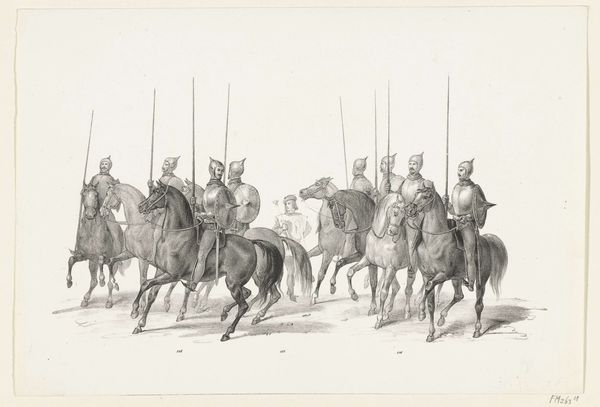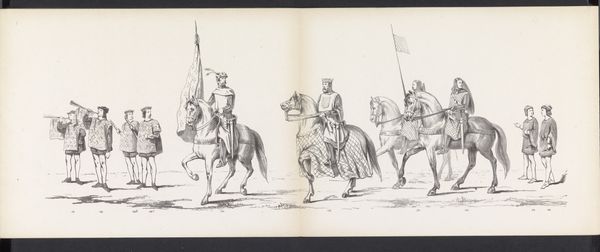
print, watercolor
#
narrative-art
# print
#
landscape
#
watercolor
#
watercolour illustration
#
genre-painting
#
history-painting
#
academic-art
#
watercolor
#
realism
Dimensions: height 290 mm, width 725 mm
Copyright: Rijks Museum: Open Domain
Curator: The composition immediately strikes me—this processional frieze, so clearly divided, yet each section contributes to the narrative momentum. Editor: Yes, there's a static grandeur but also a clear depiction of the making of... something processional. Let's tell the visitors that this watercolour illustration, “Delftse optocht van 1873 (tiende plaat)”, which translates to “Delft Parade of 1873 (tenth plate)”, meticulously captures an elaborate historical pageant. It originates from 1873 and, to me, encapsulates the character of realism through the watercolor and print media it utilizes. Curator: The rendering of light is quite beautiful, especially the diffuse way the watercolor washes over each mounted figure. Consider how each segment of the group carries the eye forward, not linearly, but adding texture. Semiotically, consider that it is less about depth than it is about surfaces of understanding through symbol. Editor: Precisely. Look at the various textures meticulously created using watercolor techniques: the glossy sheen of the horse tack, the weave of the fabrics. We can almost feel the weight of the armor, a feat achieved not through trompe l’oeil but a skillful application of medium. Also, thinking of printmaking practices – these figures and objects are products to display the wealth of the Netherlands through a medium available to the wider population. Curator: Let’s unpack the iconography. The costumes appear almost operatic. A sort of meta-spectacle embedded within spectacle. It's a painting about the very act of remembering and staging history. Each costume is a signifier. Editor: And made so deliberately with labor; a celebration but also manufacture, with each person an actor in a play, performing roles. The artist seems to call attention to process - to make a piece, to make a historical narrative. Curator: The painting performs the act of procession for us! Editor: Indeed, in viewing this painting, we become another element in this historical reflection! Curator: Thinking of the structure and the way the artist employs symbolism opens so much discussion, even if it's just speculation on the act of viewing a past reality and historical event. Editor: Looking closer at material making the image – the physical act of labor to commemorate is its own, very Dutch, tale.
Comments
No comments
Be the first to comment and join the conversation on the ultimate creative platform.
